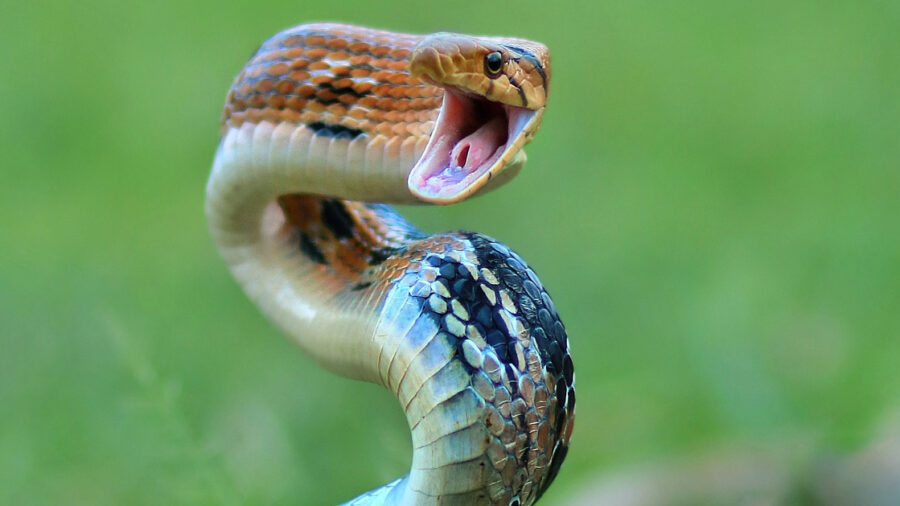A Horrifying Penis Snake Has Just Been Found In The United States
Yes, a penis snake slithers among us.
This article is more than 2 years old

An obscure, legless amphibian, commonly referred to by some as “penis snake,” is the latest invasive species to make its way to South Florida. Technically neither snakes nor penises; these creatures are usually native to certain parts of South Africa. However, it would seem that some of them found their way into the Tamiami Canal near the Miami International Airport.
DNA analysis confirms that these eel-like creatures, previously pulled from a Florida canal two years ago, are formally known as caecilians (pronounced seh-SIL-yens) – tropical amphibians that look like giant worms or slick snakes. According to Gizmodo, the same canal has since yielded several other specimens, leading to concerns that non-native amphibians have taken root in the United States. However, expert researchers for Reptiles & Amphibians, an international open-access journal focused on publishing research regarding reptiles and amphibians, stated that this represents the first record of a caecilian, or “penis snake” in Florida or elsewhere in the US.
The first 2ft-long specimen was captured in November 2019, by the members of the Florida Fish and Wildlife Conservation Commission (FWC), during a routine survey of the canal near Miami International Airport. Unfortunately, the animal eventually died in captivity as all attempts to feed it failed – it starved itself to death. However, the specimen was sent to the Florida Museum of Natural History for further analysis, where geneticists identified the species as Typhlonectes natans, a species native to Columbia and Venezuela. Since the capture of the would-be snake, the FCW and Florida Museum of Natural History have received several more specimens, all captured from the same canal – a possible courtesy of snake catchers.
Despite several specimens being captured from the same canal, experts still can’t confirm that penis snakes have become an established species in the Tamiami Canal. They’re also unsure how the caecilians were introduced to Florida. Still, Coleman Sheehy, Florida Museum’s Herpetology Collection Manager, says that this particular species, the Typhlonectes natans, is often bred in captivity and is the most common caecilian in the pet trade. So, there’s a strong chance that someone released these oddly-shaped snakes as discarded pets.
Though referred to as snakes, caecilians are by no means poisonous. They’re just unsightly, like the San Francisco garter snake, thousands of which were found in close proximity to yet another international airport – the San Francisco International Airport. However, unlike San Francisco garter snakes, caecilians have very poor eyesight. Instead, they use a pair of sensory tentacles to help them find food. And while some species like to burrow underground, Typhlonectes natans, like the one found in the Tamiami canal, prefers fresh, warm, slow-moving shallows with aquatic vegetation and prays on soft insects, small snakes, frogs, and lizards.
Though commonly referred to as snakes, eels, and now penises, caecilians are not related to any of those aforementioned things (pun intended). Instead, they belong to the Gymnophiona order of amphibians, making them more closely related to frogs, toads, salamanders, and newts. As for their presence in the South Florida canal, it’s still unclear whether and how they might affect the local wildlife. In all probability, they’ll eat small animals and get eaten by larger ones. However, it’s worth noting Florida recently banned the sale of invasive reptiles, as escaped or released iguanas and snakes have proliferated out of control.












